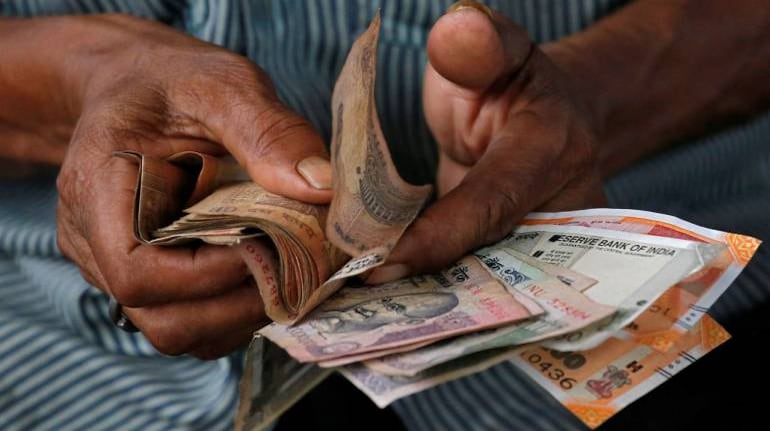



Indian microlenders are fighting to survive yet another crisis in the wake of the deadly COVID-19 pandemic. Liquidity has dried up particularly for smaller companies.
In fact, it’s not just liquidity; recent fraud allegations at one of the major Odisha-based MFIs, Sambandh Finserve, has raised questions on the corporate governance standards in the industry. Early this month, Brickwork Rating cut the ratings of Sambandh to junk following defaults on payments.
Microfinance Institutions Network (MFIN) is one of the largest bodies of Indian microlenders whose members have a combined loan portfolio of Rs 2.27 lakh crore. MFIN CEO Alok Misra spoke to Moneycontrol on a range of issues including the Sambandh allegations in an exclusive interview.
Edited excerpts:
The alleged fraud at Sambandh Finserve has shocked the sector. Your view?
This incident further adds to the challenges as lenders may turn wary looking at such events. Already, the COVID concerns are there and now this has happened. If 75 percent of the loan book is allegedly non-existent, it points to a deep-rooted problem. This has been allegedly going on for years and couldn’t have happened in one or two months. MFIN has written to the company seeking participation in the investigation into the alleged financial irregularity. This is because MFIN has the expertise to understand the issue better. We are awaiting their response. Our main focus is on what went wrong and how we can ensure this doesn’t happen in other companies.
 MFIN CEO Alok Misra.
MFIN CEO Alok Misra.
Is it a failure of the self-regulation mechanism? What does MFIN plan to do on this issue?
What is the mandate given by the Reserve Bank of India (RBI) on SROs (self-regulatory organisations)? The SRO doesn’t look at fraud detection. How do we check operational-level fraud unless we start doing a financial audit? However, we are trying to strengthen our data analysis and data intelligence wing in the light of this event and make third party evaluation more effective. An SRO's main focus is on customer protection, and a world-class CGRM (Customer Grievance Redressal Mechanism) has been developed plus check on code of conduct.
How tough is the liquidity scenario for the microfinance industry at this point?
Whatever liquidity that was made available by the government and the RBI in the wake of COVID-19 has mainly gone to larger MFIs (microfinance institutions). Recently, Nabard launched a Rs 5,000 crore Additional Special Liquidity scheme. There also, we need to see how many smaller MFIs (those having less than Rs 500 crore assets) will make the cut. Bank funding to small and medium-sized companies has not been that good. As you look at smaller companies down the curve, the liquidity dries up.
Why do bankers continue to be highly risk averse?
Lenders have become extra cautious in the wake of COVID. Return to normalcy will take time. There is a trend that when one lender perceives high risk in a certain sector, all others tend to do the same.
How has it impacted smaller microlenders?
Now that the lockdown is over and clients are looking for fresh credit from these MFIs—the situation is even more challenging. This is because MFIs’ repayments to their lenders too have started. Hence, the liquidity surplus available is very less. During the moratorium, MFIs gave moratorium to all of their borrowers. But, only 40-50 percent lenders gave moratorium to smaller MFIs. This added to the cash crunch as the excess liquidity got sucked in. Now, fresh funding is not coming in for smaller MFIs, thus adding to the problem.
Have any MFIs closed down during the pandemic?
None has closed down. Even if you don’t lend, you have to be there to recover the money lent already as per schedule. If you close down, you will not recover that money. If Nabard’s ASL facility gets operational in the next 20 days, there will be some relief to the smaller players.
Are you happy with the eligibility terms set by Nabard to avail of the ASL scheme?
The terms of the scheme are slightly relaxed but not entirely suited for smaller MFIs. One of the conditions is that out of four years of operations, three years need to be in profit. The smaller ones typically take a few years to come to profitability. These firms may not make the cut if one goes by the profitability criteria set by Nabard. Also, 20 percent cash collateral requirement too may come as a hurdle as smaller MFIs may not be able to meet this.
Where is the money coming for smaller MFIs now?
Institutions like SIDBI, MUDRA and NABARD continue to be somewhat generous because of the liquidity assistance initiatives from the RBI and the government. Other lenders, NBFCs and private banks, are not very forthcoming when it comes to smaller companies. They are still a bit wary when it comes to lending to smaller players.
AP crisis, demonetisation and now a pandemic - how has the industry changed?
The crisis in Andhra Pradesh brought down the entire MFI operations in the state to almost nil. Demonetisation also had an impact. The current crisis may continue for a while. If liquidity does not come in by March, then that could be a tough situation for smaller MFIs. It is hard to predict. But some institutions may find it difficult to survive. If you are not making any disbursements and only doing the collection, that will not work in the long term. The RBI has given the December deadline to do the one-time resolution. From January onwards, you will get a clearer picture as to what’s happening on the ground. Lenders too will have more clarity by then.
But liquidity continues to be an issue. What are you planning to do?
We have set up a consortium of larger MFIs within MFIN to see if they can support smaller MFIs. These include five MFIs like Arohan, Muthoot, Satin and Svatantra Microfin. When Nabard gives liquidity to the larger MFIs, they can see if that money can be lent to smaller ones. We also plan to call a lenders’ meeting by November to apprise them about the resilience of the sector once we have adequate data. We are trying to reassure the lenders.
MFIs have written to the RBI to change the pricing method. Could you explain?
Yes. The five lenders whose average base rates are considered for calculations are not major lenders to smaller MFIs, who borrow from NBFCs. Their rates have no major connect with MFI’s cost of funds. We have requested the RBI to review the pricing part. This can be done either by removing the interest rate cap and permit margin plus cost of funds calculation or using the first quarter base rate until clarity emerges.
Discover the latest Business News, Sensex, and Nifty updates. Obtain Personal Finance insights, tax queries, and expert opinions on Moneycontrol or download the Moneycontrol App to stay updated!
Find the best of Al News in one place, specially curated for you every weekend.
Stay on top of the latest tech trends and biggest startup news.